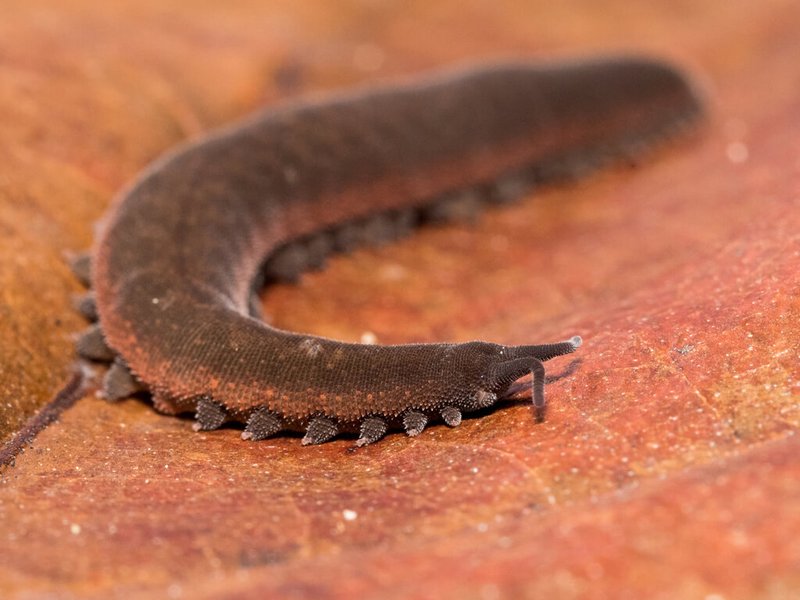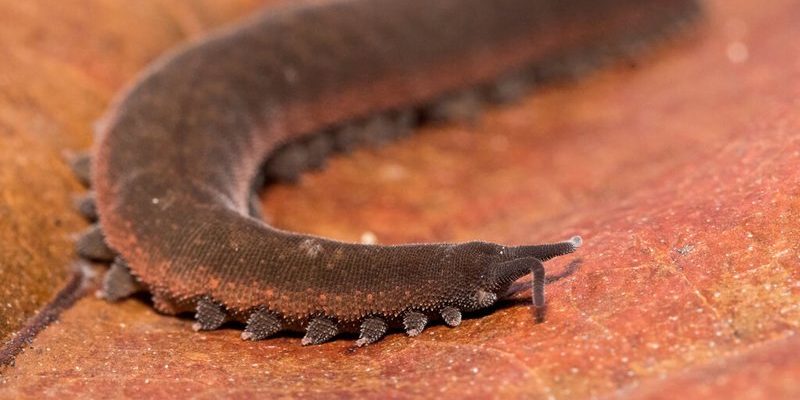
So why should we care about velvet worms? Well, they play a crucial role in their ecosystems, contributing to the balance of nature. In this article, we’ll explore how ecotourism can promote responsible observation of velvet worms, ensuring these unique creatures thrive while allowing us to appreciate their beauty. Buckle up for a journey that blends nature, conservation, and a bit of wonder!
What Are Velvet Worms?
Velvet worms, also known as onychophorans, are a fascinating group of animals that live primarily in humid, tropical environments. They’re not your typical bugs; in fact, they’re more closely related to arthropods like insects and spiders. Their bodies are soft, almost like a gummy bear, and they can range from a few centimeters to about 15 centimeters in length. You might find them in leaf litter, under rocks, or tucked away in the crevices of trees, which makes them a bit elusive.
Here’s the thing: velvet worms have a unique way of hunting. They secrete a sticky slime to trap their prey, usually small insects. Watching them in action is like witnessing a mini nature documentary unfold right before your eyes. With about 300 species worldwide, these little wonders are more diverse than you may think!
The Role of Velvet Worms in Ecosystems
You might be wondering, “What’s the big deal about velvet worms?” Well, these creatures are essential for maintaining healthy ecosystems. They help control insect populations, acting as natural pest controllers. Plus, they’re a food source for various animals, including birds and reptiles. By keeping these roles in check, velvet worms contribute to the delicate balance of their habitats.
Also, velvet worms play a part in nutrient cycling. As they consume decaying organic matter and other small organisms, they help break it down, enriching the soil. Healthy soil leads to robust plant growth, which is vital for the entire ecosystem. So, it’s safe to say that velvet worms are small but mighty!
Ecotourism: A Friend to Velvet Worms
Ecotourism promotes responsible travel that focuses on experiencing nature while being mindful of its preservation. With velvet worms, this can mean offering guided tours that educate visitors about their habitat and importance. By experiencing these incredible creatures sustainably, tourists help raise awareness and funds for conservation efforts.
Here’s how ecotourism can benefit velvet worms:
- Education: Tour guides can teach visitors about the role of velvet worms in ecosystems.
- Funding: Entrance fees often go towards habitat protection and research.
- Conscious Observation: Responsible observation practices ensure that these creatures aren’t disturbed.
By participating in ecotourism, you’re not just observing velvet worms; you’re contributing to their survival!
Responsible Observation Practices
So, you’ve decided to embark on an adventure to observe velvet worms. Great choice! But how do you do it responsibly? Responsible observation means respecting the creatures and their environment. Here are some tips to keep in mind:
- Stay on designated paths: This protects the delicate soil and surrounding plants where velvet worms live.
- Limit flash photography: Bright lights can disturb these creatures, so use natural light whenever possible.
- Keep noise to a minimum: Loud sounds can scare them away, so be respectful of their habitat.
Taking these simple steps ensures that your presence doesn’t negatively impact velvet worms or their environment.
How to Find Velvet Worms in the Wild
Finding velvet worms can be a challenge, but that’s part of the thrill! They’re often camouflaged against the forest floor, so it helps to know where to look. Here are a few tips for your search:
1. **Look for humid areas**: Velvet worms thrive in moist environments, so check under logs or in damp leaf litter.
2. **Search during the right time**: Dusk is often when they become more active, making evening walks a perfect opportunity.
3. **Team up with a guide**: Local guides can help spot velvet worms and share their knowledge about these fascinating creatures.
The excitement of discovering a velvet worm in its natural habitat can be a memorable highlight of your ecotourism adventure!
The Future of Velvet Worms and Ecotourism
As ecotourism grows, it’s crucial to keep velvet worms and their habitats in mind. Supporting conservation initiatives can help protect these unique animals and the delicate ecosystems they inhabit. Additionally, raising awareness about their significance fosters a sense of responsibility among travelers.
Many organizations are starting to focus on velvet worms in their conservation efforts. By backing these initiatives, you can play a part in securing a brighter future for these amazing creatures. It’s a partnership between humans and nature that can lead to sustainable solutions.
In conclusion, velvet worms are more than just quirky inhabitants of the forest floor. They’re vital players in the ecosystems they call home. By approaching ecotourism with respect and mindfulness, we can enjoy observing these delightful creatures while ensuring their survival for generations to come. So, as you plan your next adventure, consider not just how you can enjoy the sights, but also how you can contribute to preserving the wonders of nature, including velvet worms.

